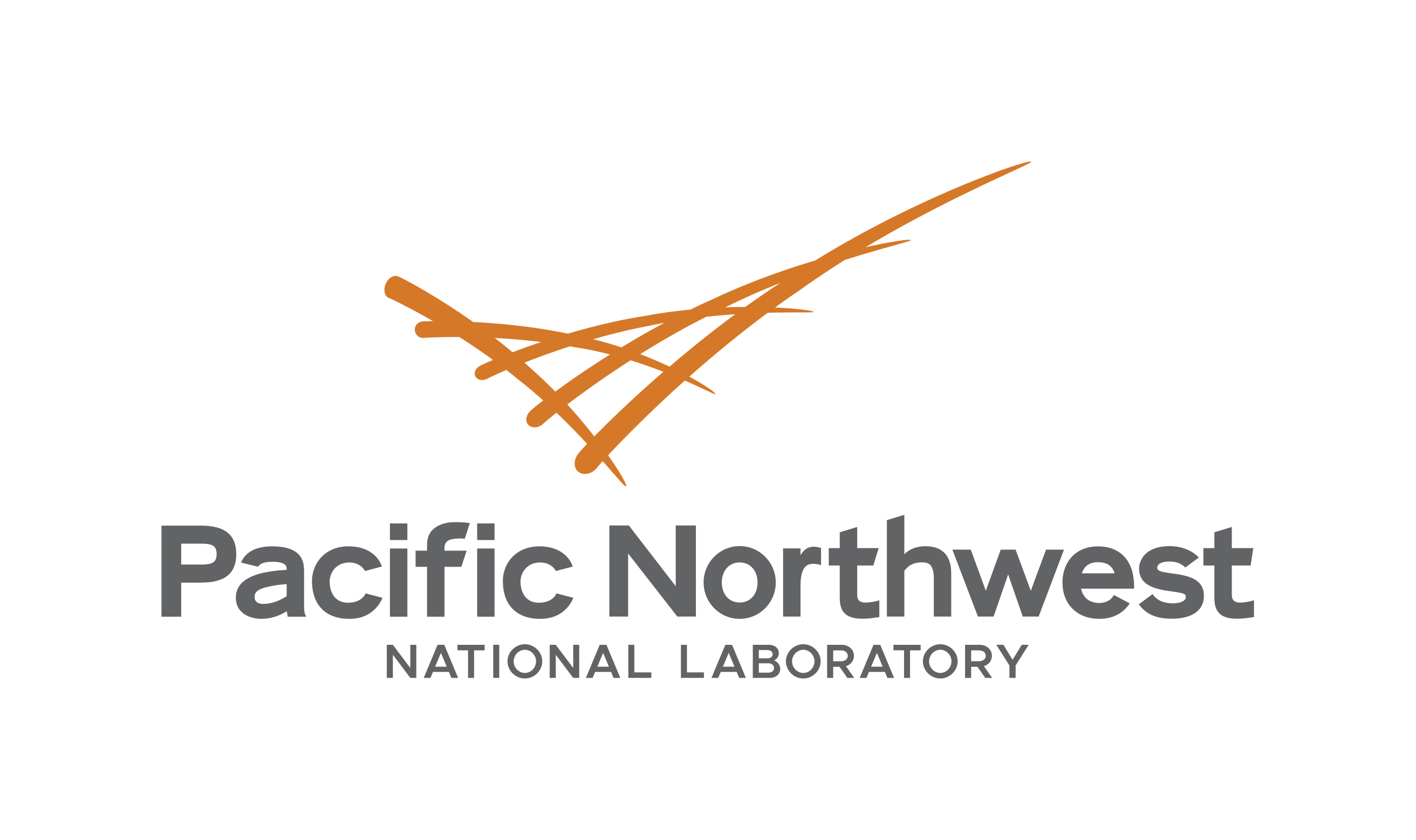About the NRF Policy Landscape Analysis Tool v2.0
NOTE: THIS VERSION OF NRF-PLAT WORKS BEST IN FIREFOX, CHROME OR SAFARI. IE IS NOT RECOMMENDED AT THIS TIME.
In 2019, Pacific Northwest National Laboratory (PNNL) embarked on a small, internally funded effort to explore the National Response Framework (NRF) in a format conductive to visualization and comprehension. The resulting tool, the PNNL National Response Framework Policy Landscape Analysis Tool, can be utilized to better understand the foundational management doctrine for how the nation responds to all types of catastrophic incidents and disasters.
The NRF is contained in a series of documents that describe the complex interactions of federal, state and local entities, as well as individual citizens. To help us organize the information in the base document of the NRF, we developed three summary documents (the Summary of the NRF, Overview of the NRF and Overview of the Emergency Support Functions). We also developed a taxonomy, a faceted browser that allows a user to select segments of the NRF based on a variety of descriptors, and a visualization of the distribution of responsibilities, recommendations and value statements ascribed to the NRF’s various stakeholders. These features can be accessed via the navigation panel on the left.
All the information on this tool was extracted directly from the National Response Framework. We took the liberty of organizing the information in a manner that we found more intuitive. https://www.fema.gov/sites/default/files/2020-04/NRF_FINALApproved_2011028.pdf
The NRF-PLAT developer team includes Kristin Omberg, Rachel Bartholomew, Lyndsey Franklin, Yavana Ganesh, Justine Spencer, Seth King and Olympia Hunt.
Please contact Kristin Omberg (kristin.omberg@pnnl.gov), Justine Spencer (justine.spencer@pnnl.gov), or Yavana Ganesh (yavana.ganesh@pnnl.gov) with any questions, comments, suggestions, or reports of typographical or transcription errors, which we will do our best to correct promptly!
The NRF-PLAT v1 was last updated: 12.15.2020, PNNL-SA-158190
Reference herein to any specific commercial product, process, or service by trade name, trademark, manufacturer, or otherwise does not necessarily constitute or imply its endorsement, recommendation, or favoring by the United States Government or any agency thereof, or Battelle Memorial Institute. The views and opinions of authors expressed herein do not necessarily state or reflect those of the United States Government or any agency thereof.
PACIFIC NORTHWEST NATIONAL LABORATORY
operated by
BATTELLE
for the
UNITED STATES DEPARTMENT OF ENERGY
under Contract DE-AC05-76RL01830

Summary of the National Response Framework
The National Response Framework (NRF) sets the strategy and doctrine for how the whole community builds, sustains, and delivers the response core capabilities identified in the National Preparedness Goal in an integrated manner with the other mission (p. 1). The NRF is a framework for all types of threats and hazards, ranging from accidents, technological hazards, natural disasters, and human-caused incidents (p. 3). The NRF is based on the concept of tiered response with an understanding that most incidents start at the local or tribal level, and as needs exceed resources and capabilities, additional local, state, tribal, territorial, insular area, or federal assets may be required (p. 48). Focusing on community lifelines allows emergency managers and their partners to account for these complex interdependencies and prioritize response operations to achieve high-impact, multi-sector benefits (p. 2). First, community lifelines are interdependent and vulnerable to cascading failures (p. ii). Second, community lifeline stabilization relies on businesses and infrastructure owners and operators who have the expertise and primary responsibility for managing their systems in emergencies (p. ii).
Download the  Overview of the NRF .
Overview of the NRF .
Overview of the National Response Framework
Emergency Support Functions and ESF Coordinators
One of the most difficult aspects of assembling the NRF-PLAT was to extract policies without losing the complex, collaborative, and multifaceted nature of the NRF and, more fundamentally, the “whole-of-government” response to large scale disasters and emergencies. As developers, we used a particular set of definitions and rules, and have captured them here for reference. We acknowledge that other rules and interpretations could have been applied, and the results would be equally valid.
Fortunately, the NRF identifies categories of partners (e.g., communities, federal government) and components of partners (e.g., private sector entities, specific executive branch agencies). We used these as the basis for defining primary and additional partners and specific designees, and heavily leveraged knowledge and expertise we have gained from interacting with federal, state and local authorities.
The NRF contains a mixture of statements, some of which are explicit recommendations and some of which express the principles upon which the NRF was designed. These have been captured in the tool but assigned a “category,” defined in more detail below.
Questions specifically related to the taxonomy should be referred to Kristin Omberg (kristin.omberg@pnnl.gov), Justine Spencer (justine.spencer@pnnl.gov), and Yavana Ganesh (yavana.ganesh@pnnl.gov). These developers spent hours agonizing over the definitions and welcome additional input and perspective.
Primary Partner: A partner was deemed primary if the responsibility for managing and executing the main response was explicitly assigned (e.g., “The federal government shall…”). If the responsibility was assigned equally to more than one partner (e.g. “The Federal Government in coordination with State, Tribal, Territorial, and Insular Area Governments shall…”), all equal partners were listed as primary.
Specific Designee: If the text of the NRF explicitly delegates a responsibility to entity (for example, if a responsibility of the federal government is specifically assigned to the Department of Homeland Security), the specific designee was captured.
Specific Role: If a responsibility is to be performed by an individual serving in a specific role (e.g., “The Governor will…”), the specific role was tagged. Note that not every responsibility has a specific role assigned.
Additional Designee: An organization that works to support the specific designee in completing the assigned tasks was tagged as an additional partner/designee (“The Federal Government provides assistance to Local, State, Tribal, Territorial, and Insular Area authorities…”).
Category: In an effort to organize the NRF, each responsibility was assigned as a requirement, recommendation, value statement, or training opportunity. A responsibility could be both a requirement and a value statement/training opportunity.
Requirement: If the responsibility outlined was mandatory (“Governments at all levels must plan…”), it was assigned as a requirement.
Recommendation: If the responsibility outlined was suggested (“Elected and appointed officials may...”), it was assigned as a recommendation.
Value Statement: If the responsibility was neither a requirement nor recommendation but instead mentions the standards of the agency/organization (“Public sector government resources alone cannot provide all the solutions when responding to incidents.”), it was assigned as a value statement.
Training Opportunity: If the responsibility encompasses educational components that would ensure the best course of action for future response (“The response core capabilities are the activities that generally must be accomplished in incident response, regardless of which levels of government are involved.”) it was assigned to the training category.

